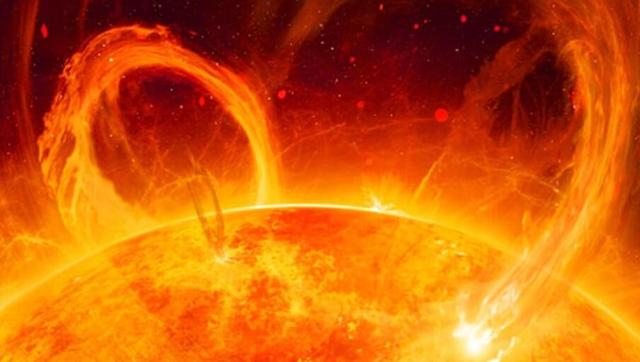The sun, which we call the 'source of all things', has been sending light and heat to the earth for the past 4.6 billion years, which is why the earth is such a vibrant planet.
What exactly does the sun use as fuel and how has it been able to burn for 4.6 billion years without going out?
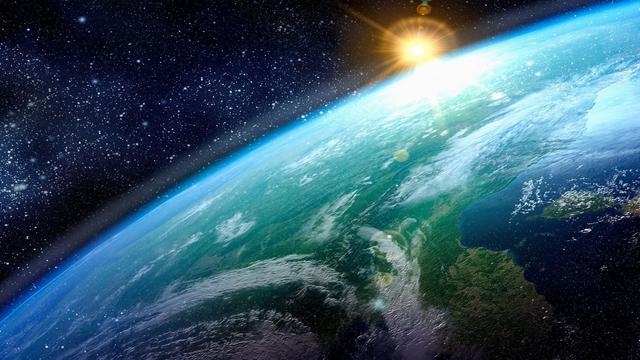
One view was that the sun's fuel would be coal, and that it would burn for a long time only because there was so much of it on the sun.
However, it was later discovered that, given the size of the sun, even if it were all made up of coal, it would only burn for about 5,000 years, which is far more than 5,000 years, so this view was rejected and the mechanism of the sun's combustion became a mystery.
It was only in the 20th century, with the development and refinement of quantum mechanics, that scientists came up with a plausible explanation for the source of the sun's energy, namely that it comes from the nuclear fusion reaction at its core, and that the "Nuclear fuel" It uses is hydrogen, the most abundant and simplest element in the universe.
The common phenomenon of combustion is the violent oxidation of a combustible material with oxygen, which releases light and heat in the form of a flame, so technically the sun does not burn, but for the sake of description, we will describe the sun's luminous emission of heat as 'combustion'.
Scientists believe that in the core reaction zone of the sun, hydrogen nuclei are constantly converging into helium nuclei through a series of reactions that release energy due to a loss of mass, and since a hydrogen nucleus is actually a proton, this series of reactions is called a "Proton-proton chain reaction".
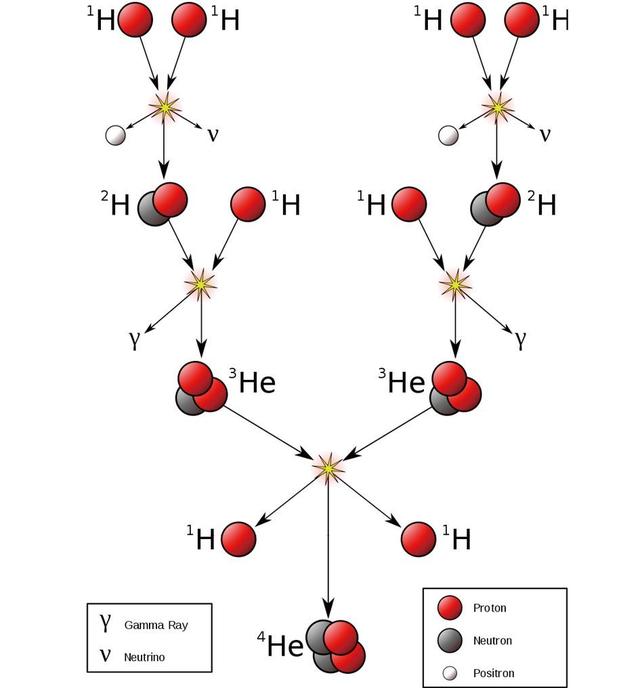
As the diagram above shows, the "Proton-proton chain reaction" Can be simply divided into three steps.
But the problem is that the radius of the solar core takes up about a quarter of the radius of the sun, and theoretically, the conditions for a "Proton-proton chain reaction" Should be present anywhere in this area, in which case all the protons in the solar core should fuse in a very short time and in this case, all the protons in the solar core reaction zone should fuse in a very short time and release enormous energy.
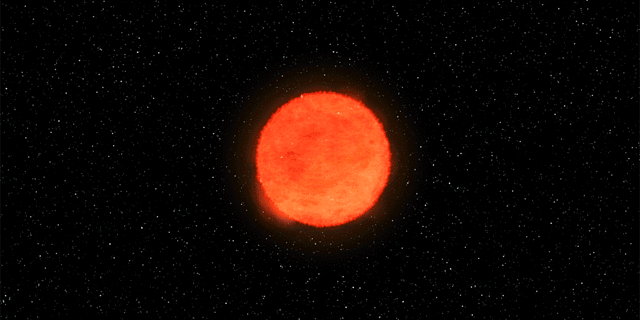
Obviously, this did not happen, otherwise the sun could not have burned for 4.6 billion years without going out, why? This is in fact explainable.
The key lies in the first step of the "Proton-proton chain reaction", which is the polymerisation of two protons into a deuteron nucleus.
Since temperature is the intensity of the thermal motion of a microscopic particle, we can assume that the temperature must be high enough for two protons to collide, and how high does it need to be? The answer given by scientists is: At least hundreds of millions of degrees celsius.
However, the temperature in the core of the sun is only about 15 million degrees celsius, which is not high enough for two protons to collide, so why does the sun still burn? In fact, this question had troubled scientists for a long time, until the discovery of the "Quantum tunneling effect".
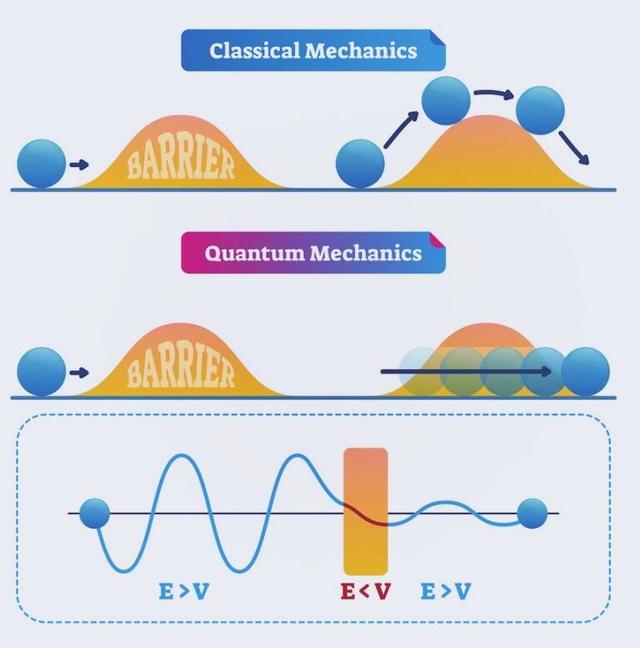
The "Quantum tunneling effect" Means that microscopic particles have a very low probability of passing through barriers that are impossible to pass through in classical mechanics, despite the lack of energy, which is why it has been jokingly referred to as the "Wall-piercing technique of the microscopic world".
It is important to note that the "Quantum tunneling effect" Can be explained by the "Wave-particle duality" Of microscopic particles and the "Energy-time uncertainty principle" Of quantum mechanics. In addition, the "Quantum tunneling effect" Has long been demonstrated experimentally and has been used in certain applications, such as the "Scanning tunneling microscope", which is used to observe and locate atoms, and which uses the "Quantum tunneling effect". For example, the "Scanning tunneling microscope", which is used to observe and locate atoms, makes use of the "Quantum tunneling effect", so it can be said that this phenomenon is real.
On the other hand, when two protons collide, they form a "Double proton", which is so unstable that scientists have found that in a very short time (less than 1 nanosecond), the "Double proton" Has 99% of its value. The scientists found that within a very short time (less than 1 nanosecond), there is a 99.999% probability that the "Double proton" Will decay back into two protons, and only with a very small probability that one of the "Double protons" Will become a neutron due to a beta decay, thus making the "Double proton the "Double proton" Is transformed into a deuteron nucleus containing a proton and a neutron.
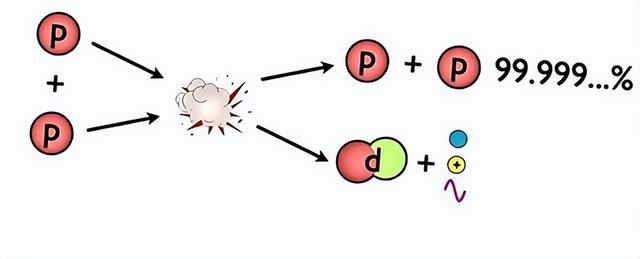
Scientists believe that the probability of the "Quantum tunneling effect" Is already extremely low, and that with the addition of the decay of the "Double proton", the probability of the first step of the "Proton-proton chain reaction" It is for this reason that the sun is able to consume the nuclear fuel in its core at a very slow rate and continue to burn steadily.
After reading the scientists' explanations, i believe we all understand why "The sun can burn for 4.6 billion years without dying". It is worth mentioning that the sun's "Nuclear fuel" Will eventually run out, and according to scientists' estimates, the hydrogen in the sun's core will be depleted in about 5 billion years, and the earth will then become unsuitable for human existence.


